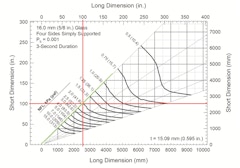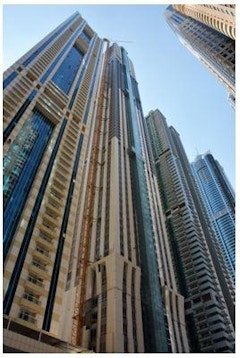
Fixed Edge Supports
Model building codes and standards in the United States use a probabilistic model to define glass load resistance (LR). In general, these model

Model building codes and standards in the United States use a probabilistic model to define glass load resistance (LR). In general, these model


Thermal bridging through building facades have been overlooked or over-simplified by designers and building energy codes and standards in the past, which has led to higher space heating and cooling loads, occupant discomfort, and higher risk of condensation.

Ivan Lee, a Building Science Consultant at Morrison Hershfield recognizes the importance of mitigating thermal bridging to meet low energy targets for buildings. He points out that many jurisdictions are starting to incorporate thermal bridging into their codes and standards

ASTM published the first version of ASTM E2461-05: Standard Practice for Determining the Thickness of Glass in Airport Traffic Control Tower Cabs in

Curtain walls and window walls are typically specified to meet a variety of different performance and testing criteria, some of which can be quite




Buildings account for over 40% of global emissions (GlobalABC, 2018). Growing populations and higher standards of living are increasing pressure on


What was once an accepted reality in heat-treated exterior glass, optical disturbances in glass are under increasing scrutiny by developers,

Glass is an essential component for any type of building. Its transparency enhances daylighting and provides occupants a view to the outside. Whether

Current glass industry standards provide clear tolerances for readily quantifiable physical properties to assist with the evaluation of visual
Glazed wall systems, such as curtain walls and window walls, are one of the most commonly used façade systems in modern buildings in North America.


The tragic fire of June 14, 2017 at the Grenfell Tower in London, England has brought to a very public global forum issues related to the impact of
